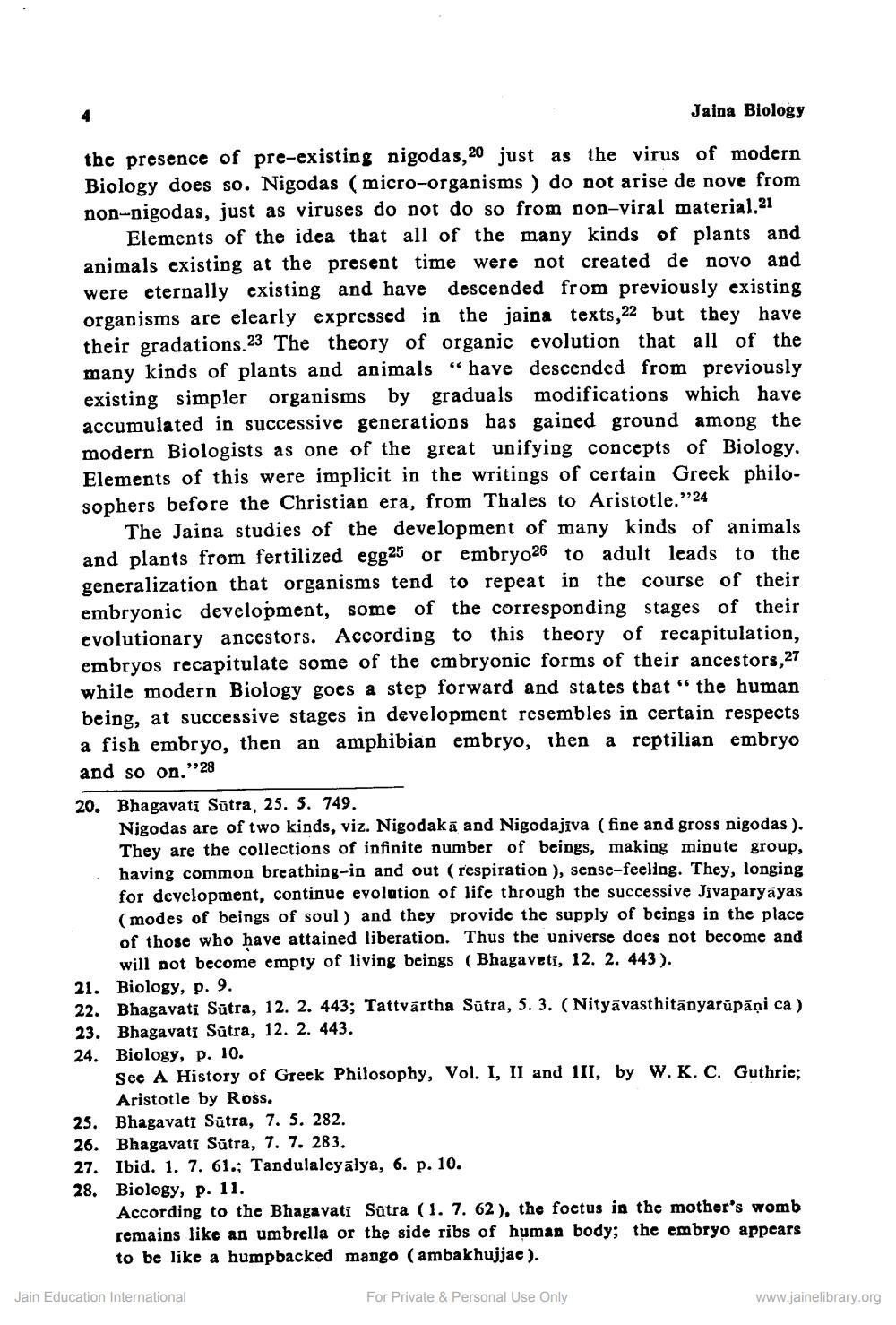________________
Jaina Biology
the presence of pre-existing nigodas, 20 just as the virus of modern Biology does so. Nigodas (micro-organisms) do not arise de nove from non-nigodas, just as viruses do not do so from non-viral material.21
Elements of the idea that all of the many kinds of plants and animals existing at the present time were not created de novo and were eternally existing and have descended from previously existing organisms are elearly expressed in the jaina texts,22 but they have their gradations.23 The theory of organic evolution that all of the many kinds of plants and animals “have descended from previously existing simpler organisms by graduals modifications which have accumulated in successive generations has gained ground among the modern Biologists as one of the great unifying concepts of Biology. Elements of this were implicit in the writings of certain Greek philosophers before the Christian era, from Thales to Aristotle.”24
The Jaina studies of the development of many kinds of animals and plants from fertilized egg25 or embryo26 to adult leads to the generalization that organisms tend to repeat in the course of their embryonic development, some of the corresponding stages of their evolutionary ancestors. According to this theory of recapitulation, embryos recapitulate some of the cmbryonic forms of their ancestors, 27 while modern Biology goes a step forward and states that “the human being, at successive stages in development resembles in certain respects a fish embryo, then an amphibian embryo, then a reptilian embryo and so on."28 20. Bhagavati Sūtra, 25. 5. 749.
Nigodas are of two kinds, viz. Nigodaka and Nigodajiva (fine and gross nigodas ). They are the collections of infinite number of beings, making minute group, having common breathing-in and out (respiration ), sense-feeling. They, longing for development, continue evolution of life through the successive Jivaparyāyas (modes of beings of soul) and they provide the supply of beings in the place of those who have attained liberation. Thus the universe does not become and
will not become empty of living beings (Bhagaveti, 12. 2. 443). 21. Biology, p. 9. 22. Bhagavati Sūtra, 12. 2. 443; Tattvārtha Sūtra, 5. 3. (Nityāvasthitanyarūpāni ca) 23. Bhagavati Sūtra, 12. 2. 443. 24. Biology, p. 10.
See A History of Greek Philosophy, Vol. I, II and III, by W. K. C. Guthrie;
Aristotle by Ross. 25. Bhagavati Sūtra, 7. 5. 282. 26. Bhagavati Sūtra, 7. 7. 283. 27. Ibid. 1. 7. 61.; Tandulaleyālya, 6. p. 10. 28. Biology, p. 11.
According to the Bhagavati Sūtra (1. 7. 62), the foctus in the mother's womb remains like an umbrella or the side ribs of human body; the embryo appears to be like a humpbacked mango (ambakhujjae).
Jain Education International
For Private & Personal Use Only
www.jainelibrary.org




